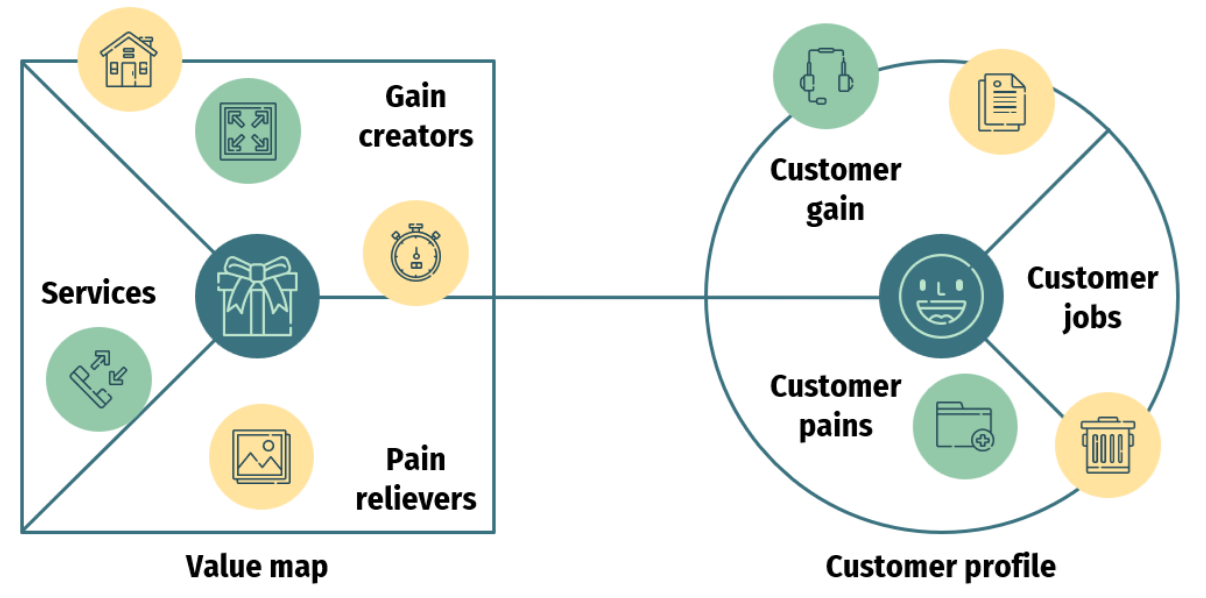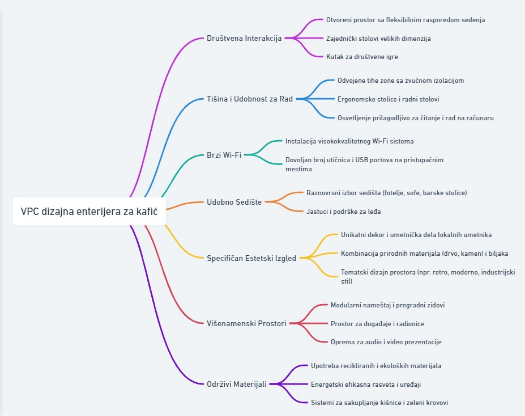Value Proposition Canvas in practice: From idea to implementation in the interior design of commercial spaces.
In the world of interior design for commercial spaces, understanding and meeting the specific needs of clients is crucial for success. This becomes even more challenging when we realize that needs and expectations can vary significantly from one client to another. This is where the Value Proposition Canvas (VPC) comes in as a powerful tool, allowing designers to clearly identify and align the values they offer with the actual needs of their clients. Through this detailed guide, we will explore how the VPC can be applied in practice for interior design, turning each idea into a realization that meets and exceeds client expectations.

The Basics of Value Proposition Canvas
The Value Proposition Canvas is a structured framework that helps in understanding customer needs and how your offering can meet those needs. It consists of two main components: Customer Segments, where you define who your ideal clients are and what drives them, and Value Propositions, where you articulate how your offer solves problems or satisfies the needs of those clients.
In the context of interior design, this means a deep understanding of how a space can influence the behavior, well-being, and productivity of those who use it.
Application of VPC in Interior Design
(Case Study: Café and Boutique Hotel Chain Interior Design)
Identifying target customers is the first step. Let’s take the example of designing the interior of a café. Your target customer may be looking for a space that promotes social interaction or, alternatively, one that offers quiet and comfort for working. Mapping customer needs then enables a more detailed understanding: what do they value in the space they use? Is it fast Wi-Fi, comfortable seating, or a specific aesthetic look? Finally, creating value propositions requires innovative thinking about how your design can meet these needs. It could be creating multifunctional spaces that can easily adapt to different activities or using sustainable materials that resonate with your target audience’s values.
Now, imagine we are hired to redesign the interior of a boutique hotel chain. Using VPC, we identified that our target customers value personalized experiences and a home-like feel. This led us to design spaces that are adaptable and personal, with elements such as adjustable lighting and modular furniture. We succeeded in creating an environment that reflects homely warmth while also offering the flexibility and functionality required by the modern traveler.
Successful Implementation of VPC in Interior Design
To make the most of the VPC in interior design, it’s crucial to establish open communication with clients and space users. Regularly seek feedback and be prepared to adjust your design based on that input. This could range from minor tweaks in color palettes to larger structural changes. Additionally, use the VPC as a living document that evolves with every new insight, allowing you to continuously improve and adapt your design.
Using the Value Proposition Canvas in interior design isn’t just a methodology—it’s a mindset that enables designers to create spaces that truly meet and exceed the needs and expectations of clients. Through a deep understanding of target customers and the ongoing alignment of design solutions with their needs, VPC facilitates the transformation of ideas into real, functional, and inspiring spaces. The world of interior design is full of possibilities, and the VPC offers a clear path for turning those possibilities into reality.
